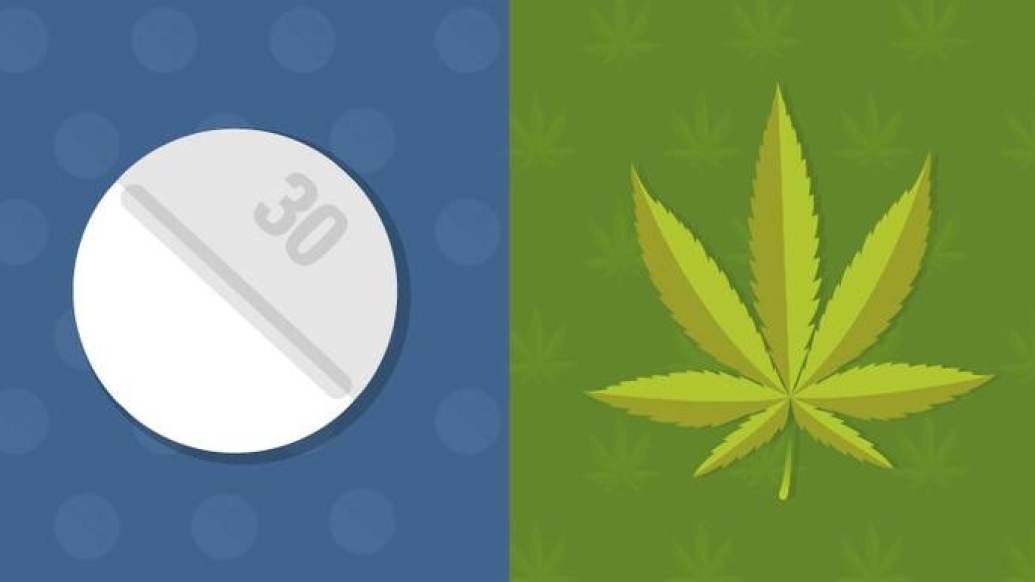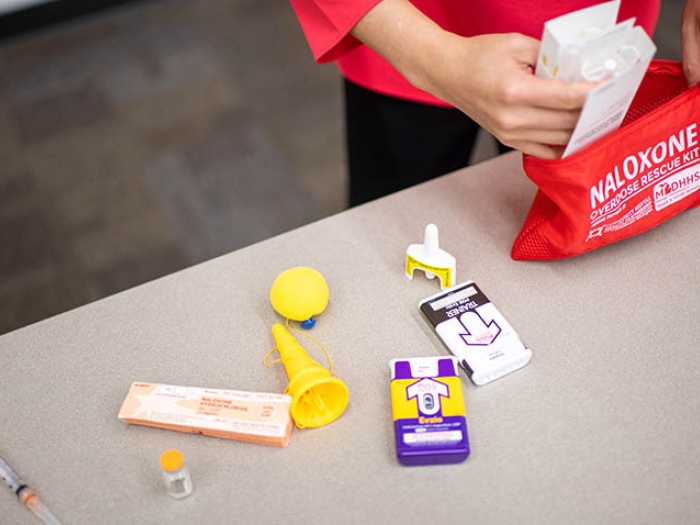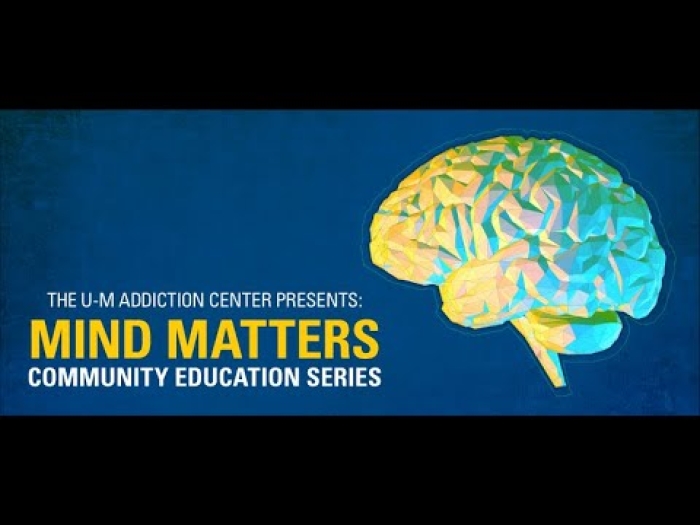The opioid epidemic is well documented, yet physicians still are wary about whether cannabinoids are better options for chronic pain. Neither is a perfect solution.
7:00 AM
Author |

Chronic pain is a tremendous public health problem. The Institute of Medicine estimates chronic pain affects 100 million Americans at an annual cost of $600 billion. Its report notes that evidence based-medicine does not support many of the diagnostic studies (like imaging) and interventions (like injections and surgery) commonly used for chronic pain.
MORE FROM THE LAB: Subscribe to our weekly newsletter
But the rampant use of opioids to treat chronic pain stands out as the least defensible and most harmful of our maltreatments. Many U.S. physicians remain resistant to this, though I would argue other options should be considered.
Here's why.
Opioids: Minimal evidence of efficacy
Many meta-analyses have found little evidence that this class of drugs is effective for the treatment of chronic pain. Of course, we all know of individual patients who experience significant relief of their pain and improvements in function with chronic opioid therapy. But for every one of these patients we know there are many more who are not helped or are harmed by opioids.
SEE ALSO: Opioids Before Surgery Mean Higher Costs, More Problems Likely Afterward
More than 14,000 Americans died in 2014 from unintentional overdose of prescription opioids, making this the leading cause of death among younger individuals in many states, according to the Centers for Disease Control and Prevention. Countless others continue to take opioids not because they have meaningful pain and functional improvement, but because they enjoy feeling numbed, or simply have not been presented with more appropriate and helpful therapeutic options. Unfortunately, it is far faster and easier to give a patient an opioid than to work through the complex issues often present in chronic pain patients. As physicians begin to realize the problems with prescribing opioids for individuals with chronic pain, an increasingly common route to opioid addiction and death is the initial prescription of opioids for acute pain after a surgical or dental procedure or ER visit.
At present, this is almost a uniquely U.S. problem. We constitute less than 5 percent of the world's population, and we consume 80 percent of the world's opioid supply.
The push for marijuana for pain
Meanwhile in the U.S., there has been a movement toward legalizing or decriminalizing the use of cannabis for the treatment of chronic pain and other conditions. Medical marijuana laws are now in effect in 25 states and the District of Columbia.
SEE ALSO: Medical Marijuana Gets Wary Welcome from Older Adults, Poll Finds
Medical marijuana advocates have used scientific data and compelling patient vignettes to show legitimate uses of cannabinoids, especially for conditions such as chronic pain, epilepsy and post-traumatic stress disorder, which are notoriously difficult to treat with our standard therapies.
Although the lay public has moved rapidly toward accepting cannabis decriminalization or legalization, the medical community does not generally share this enthusiasm for cannabinoids. Notwithstanding the legal issues (cannabis is still a Schedule I drug that cannot be prescribed), there are other legitimate issues that preclude acceptance by physicians. Even if we could prescribe cannabis, we have no idea what strength or dose to use, or which route of administration is most effective.
Weighing the risks and benefits of both treatments
Most regulatory agencies, such as the Food and Drug Administration, evaluate potential therapies based on benefit versus risk, at both the level of the individual patient and the general public health. If one compares the benefits of opioids versus cannabinoids for chronic pain, the least contentious assessment would be to call it a tie.
SEE ALSO: Fewer Veterans Got Risky Opioid Prescriptions Thanks to National VA Effort
Both classes of drugs are at best modestly effective and work well only in a small subset of patients. Both work in a similar manner to dissociate individuals from the sensory unpleasantness of pain rather than treat the root cause of pain. Opioids may be more effective in pain related to peripheral inflammation or damage, and cannabinoids more effective for neuropathic and centralized pain conditions such as fibromyalgia.
But there are not nearly enough good studies with either class of drug to enable us to say this with certainty. In other therapeutic areas, one would not even consider using any class of drug with such modest benefits. But in the chronic pain field, all of our pharmacological therapies have at best modest effect sizes.
Although the benefits of these two classes of drugs might be comparable, the risks are not.
Questioning the physician preference for opioids
Although a current analysis of the benefit/risk profile of these two classes seems to favor cannabinoids, U.S. physicians greatly favor opioids. Much of this distorted perception can be traced back to the 1960s or earlier. Opioids were considered effective for chronic pain, and thus opioids in use at that time were placed on the list of compounds considered effective by the FDA.
Any of these older opioids (and even newer opioids) now get a broad label implying they work well for any type of chronic pain, even if they are shown to be effective for only a single chronic pain condition. This is in marked contrast to newer analgesics or other drugs that are not grandfathered in and must undergo trials in each chronic pain condition in order to label that they work in that condition.
Meanwhile, in part because there has been scant research on the potential benefits of cannabinoids, many U.S. physicians are stuck back in a Reefer Madness era of cannabinoid knowledge, where cannabis will inevitably lead to "death, debauchery or hopeless insanity." We need to adjust our perceptions about these two classes of drugs based on current evidence.
There is no excuse for the common practice in U.S. pain clinics to liberally prescribe opioids while doing drug screens and discharging patients if they test positive for a cannabinoid. There is also no excuse for pharmaceutical companies to continue to market opioids as though they work broadly for chronic pain when we know there is no evidence they have efficacy for common conditions such as fibromyalgia.
It also makes no sense that cannabis is still a Schedule I drug when extracts or synthetic forms of cannabinoids are generally Schedule III. Rescheduling cannabis would enable physicians who are interested in trying to help their patients find an appropriate formulation and dose of a cannabinoid to do so.
Finally, neither opioids nor cannabinoids should be used as first-, second- or third-line therapies for pain, as there are almost always many much more effective and safer drug and nondrug therapies. We can and should do better for our patients.
How did we get here?

Explore a variety of healthcare news & stories by visiting the Health Lab home page for more articles.

Department of Communication at Michigan Medicine
Want top health & research news weekly? Sign up for Health Lab’s newsletters today!





